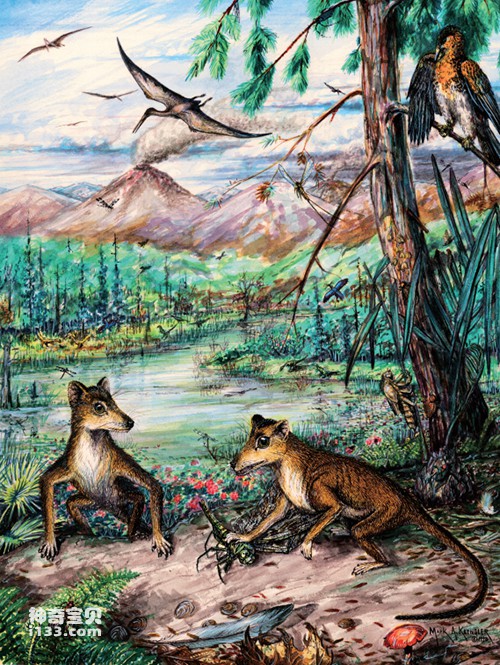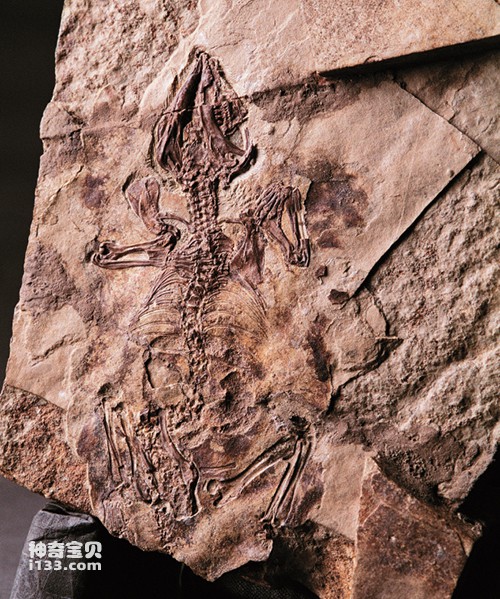The Zhanghetherium fossil, which dates back about 120 million years ago, is the world's first entheodont fossil with a relatively complete skeleton and the first mammal fossil discovered in the Jehol Biota. The morphological characteristics of its cranium base and mandible indicate that the development of its auditory organs is still at a relatively primitive stage in the history of mammalian evolution; the characteristics of its limbs indicate that it adopts a semi-lying posture, unlike most living ones. The upright posture adopted by mammals. Its discovery provides a wealth of morphological characteristic information for studying the evolution of early mammals, provides reliable evidence for exploring the phylogenetic relationships of extant mammal groups, and also opens the door to the study of primitive mammals in western Liaoning. The results were published in the British magazine "Nature" on November 13, 1997.

Restored picture of Zhang He beast

Zhanghe beast fossil
When the birds and feathered dinosaurs of the Jehol Biota attracted great attention, mammals represented by Zhanghe beast came quietly. But when scientists saw this exquisite fossil for the first time, they could not contain their excitement. It opens a new window into the history of Mesozoic mammals, and also brings the key to breakthroughs in the study of Mesozoic mammals. Several years of painstaking research by scientists have finally resulted in research results that are readily accepted by the world's top academic publications.
animal tags:
We created this article in conjunction with AI technology, then made sure it was fact-checked and edited by a Animals Top editor.